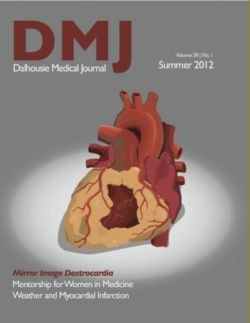The Influence of Weather on the Management of Acute ST Elevation Myocardial Infarction
DOI:
https://doi.org/10.15273/dmj.Vol39No1.3804Abstract
Objectives: To determine if seasonal and weather variables are associated with the onset of acute ST elevation myocardial infarction (STEMI)
Background: In acute myocardial infarction (AMI) the relationships between meteorological variables, seasonality, and mortality have been studied with diverging results. No studies have specifically evaluated the link between weather conditions, and the onset and subsequent invasive management of STEMI.
Methods: We analyzed data pertaining to all consecutive STEMI patients presenting to our center for primary percutaneous coronary intervention (PPCI) over a two-year period. Weather and climatic data were correlated to symptom onset, symptom-to-door, and door-to-balloon times for this cohort.
Results: Between April 1, 2008 and March 30, 2010, 254 patients with STEMI underwent PPCI at our center. The onset of STEMI had a circadian variation with most occurring during the second quarter of the day (6am-12pm). Patients with symptom onset during this time had the shortest door-to-balloon times. More STEMIs occurred on mild snow days compared to heavy snow days (p=0.02). There was no difference in door-to-balloon times for patients presenting on snow days versus no snow days. There was an increased risk of STEMI during extremes of temperature (<0 degrees Celsius or >20 degrees Celsius; p=0.05)
Conclusion: This study suggests both a circadian pattern and temperature influence on STEMI onset in this population. There was no significant relationship between other weather variables and STEMI onset or door-to-balloon times.
Downloads
Published
How to Cite
Issue
Section
License
Authors who publish with this journal agree to the following terms:
- Authors retain copyright and grant the journal right of first publication with the work simultaneously licensed under a Creative Commons Attribution License that allows others to share the work with an acknowledgement of the work's authorship and initial publication in this journal.
- Authors are able to enter into separate, additional contractual arrangements for the non-exclusive distribution of the journal's published version of the work (e.g., post it to an institutional repository or publish it in a book), with an acknowledgement of its initial publication in this journal.
- Authors are permitted and encouraged to post their work online (e.g., in institutional repositories or on their website) prior to and during the submission process, as it can lead to productive exchanges, as well as earlier and greater citation of published work (See The Effect of Open Access).


